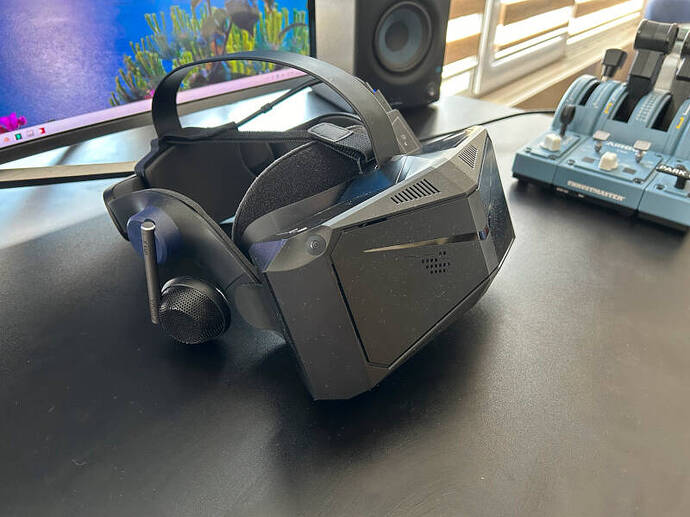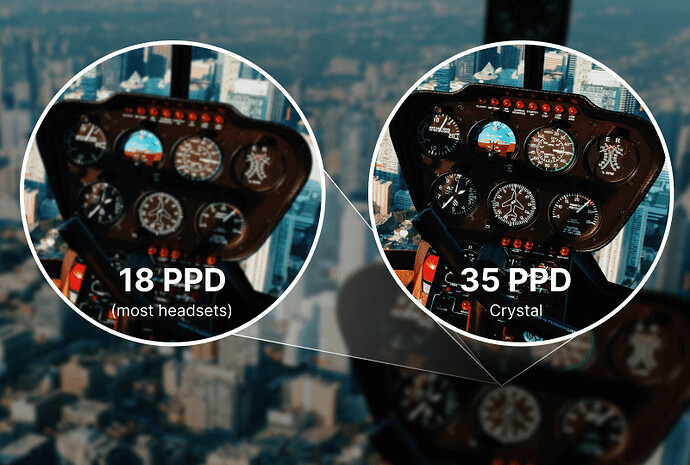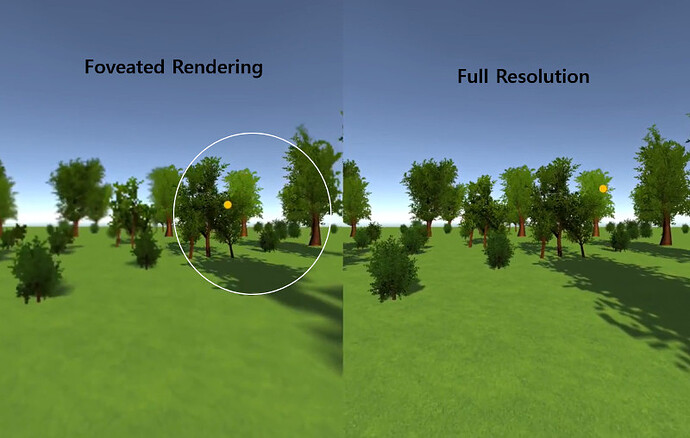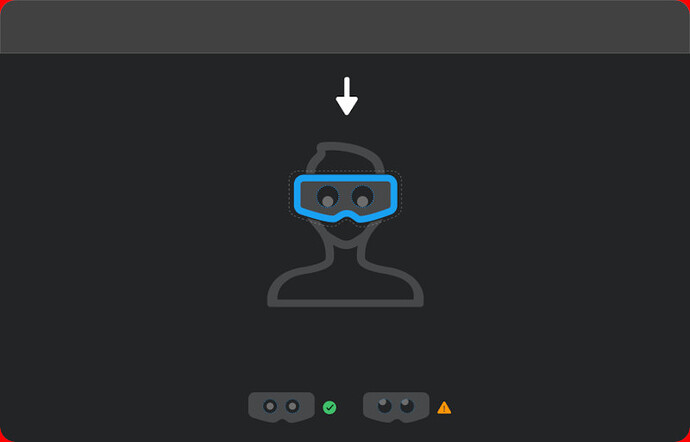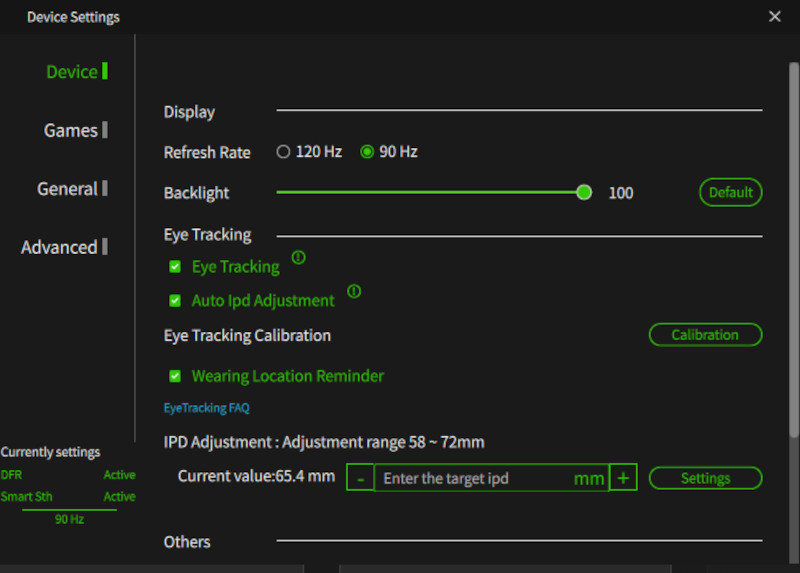I’m very excited and I’d like to share my experience with Pimax Crystal. I have a lot of experience flying with the Quest 2 and Pico 4 helmets. I liked everything about them, but there was a problem with the resolution: the instruments were blurred and some of the labels on the displays were hard to read. I wanted to solve this problem and was looking forward to the Pimax Crystal helmet. And I finally got it.
To describe the Crystal in a nutshell, it’s a helmet with a resolution of 2880x2880 per eye. That’s a giant leap from 2160x2160 in the Pico 4 or 1832x1920 in the Quest 2. In practice, it’s like walking around short-sighted without glasses, then putting them on and having a look.
Problems with the legibility of the labels disappeared completely. The perception of scenarios has also improved significantly. In addition to the high resolution, Crystal also reproduces colors much better. Where in Pico 4 the runway looked like a gray patch in certain lighting conditions, now the joints of the panels are visible and airfields can be seen from a greater distance. As I fly mostly by visual rules, this is very important to me. This is how the Pimax ad shows the difference in resolution. As usual, the ads exaggerate a lot, but in reality the difference is still huge:
The most important thing for me is the FPS. I have a good computer, but not the most powerful. Pico 4 pushed it to the limit, so Crystal’s gigantic resolution was a concern. My only hope was the gaze tracking technology built into Crystal. There are cameras that track your pupils and work out where your eyes are looking. Thanks to these cameras, Crystal can automatically adjust the distance between your eyes, which is nice, but not the most important thing.
Best of all, the software can draw a sharp image where I’m looking and a low-resolution blur where I’m not. This technology is called Dynamic Foveated Rendering, or DFR for short. The eye doesn’t notice the manipulation at all, but FPS does. Fortunately, MSFS supports DFR. With DFR enabled, the FPS increases significantly, and I didn’t notice much of a loss in speed compared to Pico 4. This image illustrates the essence of DFR technology:
The helmet looks bulky, but it’s well balanced, sits comfortably on my head and didn’t cause me any problems during an hour’s flight. I don’t usually fly longer than that. The eye-tracking feature helps you put the helmet on correctly: if it is too high or too low, the helmet asks you to put it on correctly. I was worried that the new helmet would be too untested and glitchy, but so far I haven’t noticed any problems. This is how the helmet tells you which way to move it to get a better view:
The Crystal is connected to the computer with three cables: a Display Port cable and two USB cables. You will also need to connect another USB port to update the firmware. A three-port USB hub is included, so this won’t be a problem.
In addition to its advantages, Crystal has some disadvantages. They lie in the software. To configure DFR, you have to download and install up to four applications (!!!). This is because the developers at Pimax did not implement the standard that DFR normally uses. Fortunately, the situation has been remedied by enthusiasts, but you will have to shamanise your way through the initial setup. The design of the helmet setup utility is sometimes questionable. For a long time I thought the lines after the Display and Eye Tracking labels were inactive sliders, but over time I realized they were just the design of the section headings.
Overall, Crystal is a very positive experience. I don’t want to go back to Pico 4, and even less to Quest 2. After going through seven circles of software configuration hell, the helmet works perfectly. The only thing I wish is that Pimax would include support for the OpenXR and DFR standards in their drivers so that I don’t have to jump through hoops any more. Otherwise it is very good. I recommend the Crystal to anyone who loves VR and is not afraid of spending a lot of money.
If you have any questions about the helmet, ask me here. I will try to answer all questions.
